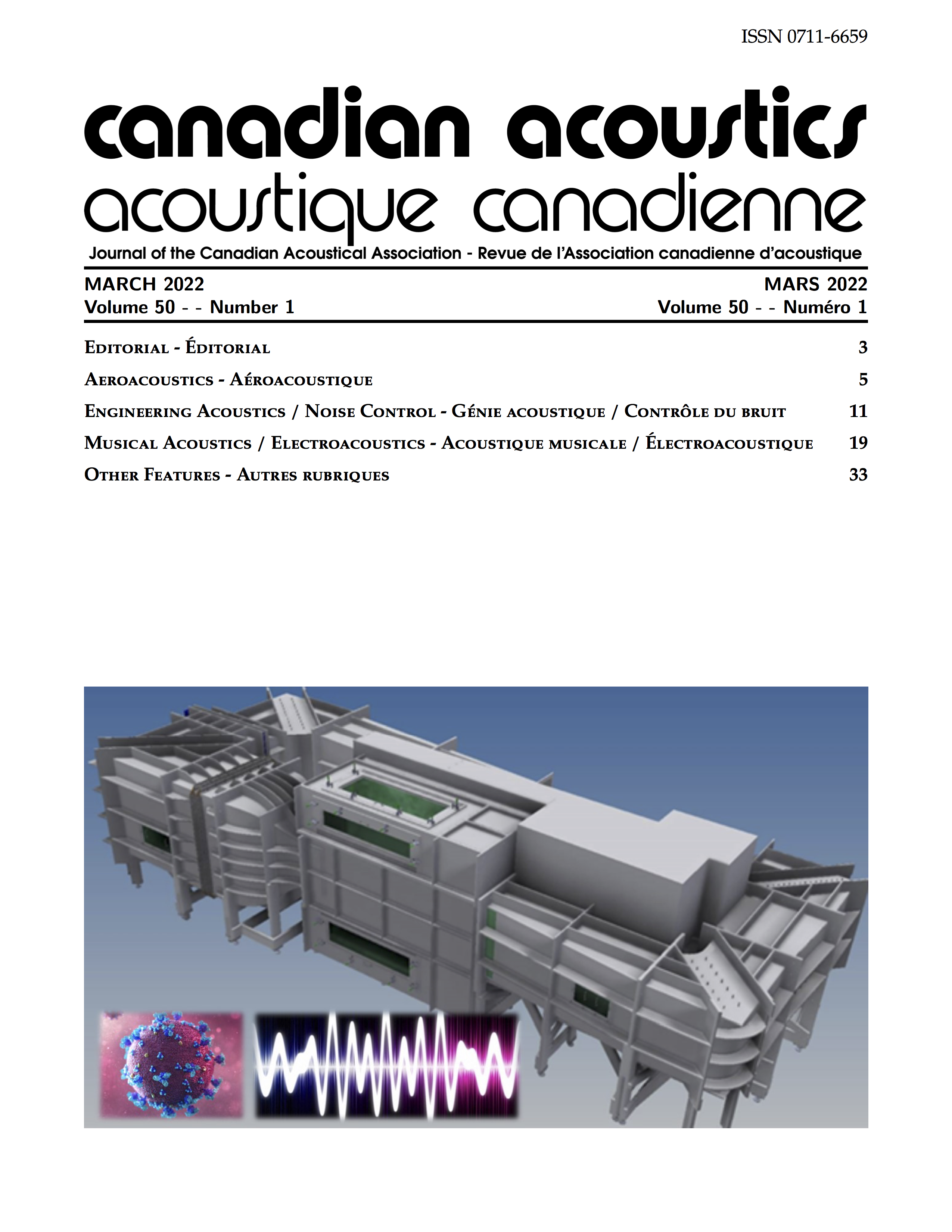Caractérisation des propriétés sonores des tambours parlants fabriqués à partir du bois de Gmelina arborea
Mots-clés :
music, wood culture, wood product, sound propertiesRésumé
Le tambour parlant est utile à des fins musicales. Cependant, il produit un timbre sonore complexe, difficile à caractériser. Bien que la géométrie de la coquille de sablier en bois constituant le tambour parlant ait été identifiée comme un facteur influençant la composition du timbre sonore, il reste encore à enquêter sur d'autres facteurs suspectés. Cette étude a caractérisé les propriétés sonores des tambours parlants des housses en cuir, la force et la position de jeu, la tension sur la corde et l'impact de surface excité. Trois boulons du la base des arbres de Gmelina arborea a été utilisée pour produire les tambours parlants, par conséquent, les propriétés sonores ont été mesurées. Les valeurs obtenues ont été soumises à des statistiques descriptives, des graphiques et une ANOVA (α0,005). La fréquence fondamentale, l'amplitude et le temps d'amortissement acoustique (SDT) sans tension sur la corde étaient significativement les plus bas (90,06 ± 27,16, 41,03 ± 4,31 et 380,83 ± 103,58) pour la force de jeu légère et les plus élevés (97,00 ± 29,68, 60,26 ± 3,59 et 474,44 ± 59,48) pour une force lourde, respectivement. A tension maximale sur la corde, SDT de peau de chèvre était significativement plus élevée (478,50 ± 77,04) que la couverture en cuir d'utérus de vache (438,89 ± 97,65), tandis que l'amplitude et le SDT étaient significativement plus élevés (66,61 ± 2,95 et 508,52 ± 51,60) pour une force lourde que pour une force de jeu légère (46,16 ± 7,06 et 408,87 ± 92,46), respectivement. La tension sur la corde était le facteur le plus essentiel nécessaire pour caractériser la propriété sonore de qualité des tambours parlants.
Fichiers supplémentaires
Publié-e
Comment citer
Numéro
Rubrique
Licence
Author Licensing Addendum
This Licensing Addendum ("Addendum") is entered into between the undersigned Author(s) and Canadian Acoustics journal published by the Canadian Acoustical Association (hereinafter referred to as the "Publisher"). The Author(s) and the Publisher agree as follows:
-
Retained Rights: The Author(s) retain(s) the following rights:
- The right to reproduce, distribute, and publicly display the Work on the Author's personal website or the website of the Author's institution.
- The right to use the Work in the Author's teaching activities and presentations.
- The right to include the Work in a compilation for the Author's personal use, not for sale.
-
Grant of License: The Author(s) grant(s) to the Publisher a worldwide exclusive license to publish, reproduce, distribute, and display the Work in Canadian Acoustics and any other formats and media deemed appropriate by the Publisher.
-
Attribution: The Publisher agrees to include proper attribution to the Author(s) in all publications and reproductions of the Work.
-
No Conflict: This Addendum is intended to be in harmony with, and not in conflict with, the terms and conditions of the original agreement entered into between the Author(s) and the Publisher.
-
Copyright Clause: Copyright on articles is held by the Author(s). The corresponding Author has the right to grant on behalf of all Authors and does grant on behalf of all Authors, a worldwide exclusive license to the Publisher and its licensees in perpetuity, in all forms, formats, and media (whether known now or created in the future), including but not limited to the rights to publish, reproduce, distribute, display, store, translate, create adaptations, reprints, include within collections, and create summaries, extracts, and/or abstracts of the Contribution.


